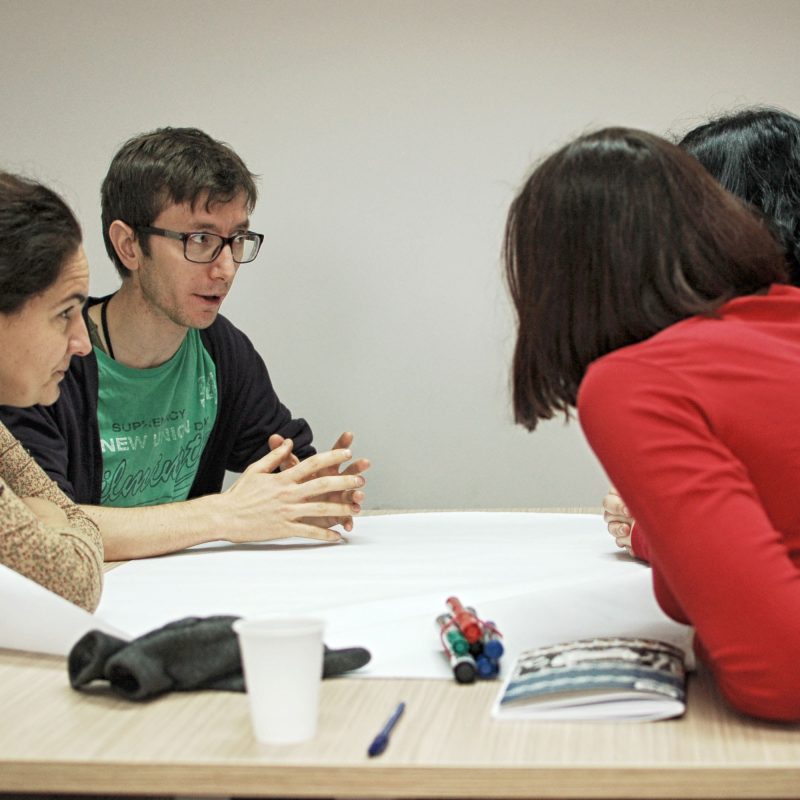
Think twice before you answer
April 25, 2016
Get ready for making profit! How many cakes you have to make?
April 25, 2016Launch your boats!
Use this scenario to help young people understand how production, sales and market are connected, and how market, customers and competition influence one’s business.
When to use it:
- understanding how production, sales and market are connected
- understanding how market, customers and competition can influence your business
Size of the group: 5 to 30 people
Age of the group: over 14 years old
Time:
Preparation: 30 minutes
Presentation: 40-50 minutes
Materials
- many A4 papers (from 50 to 100 papers, depending on the size of the group)
- coloured pencils
- coloured notes, that will be used as mock money
How
Preparation
- Read the section 5.5. Know your clients, sell your product.
- Print out a boat building scheme (for each group of 4 or 5 people).
Presentation:
- Split the participants in groups of four or five people. Each group represents a boats factory.
- Give each group 10 A4 papers and some coloured pencils. This is an investment made by a business angel who asks them to use the paper sheets and the coloured pencils to build boats, and prepare the factory for the next boats fair, where they have to sell their boats. They have only 8 minutes to build the boats, and prepare for selling them at the fair. Give no instructions on how the boats should be built.
- At the fair, the business angel decides to buy everything from the market – all the boats, no matter the quality or the prices. You play the role of the business angel and you visit each group’s exhibitions of boats, and without negotiating you buy all the boats. You give the participants mock money, in accordance with their request.
- Now, that each group has a certain amount of money in their pockets, you tell them that if they want to continue to build boats and prepare for the next fair, they have to buy the papers and the pencils. You set a price for each sheet of paper and pencil, and ask each group to decide what they want to buy and how much they want to buy.
- The groups have again 8 minutes to build the new boats and prepare for the new fair.
- At this second fair, you play again the role of the business investor and you talk with each factory and explain that the financial crisis hit you and you cannot afford to buy a lot today. You buy the cheapest one to three boats (do not buy from each factory!).
- If they still have money, the factories can decide to buy more paper or more pens.
- You give them good news, a new investor is coming on the market, and he is interesting in boats, but he/she has a precise technique / scheme that factories should follow in building the boats. You provide each group the scheme for building the boat and prepare for the fair.
- Each group has 10 minutes to prepare the new boats or re-modelling the old ones.
- The third fair is organized, and you play the role of the investor. You buy only the boats that really satisfy in terms of quality, from each factory.
- End the game explaining the concepts of demand and supply, and showing how your production and sales can be influenced by competition, market requirements and market fluctuations; and explain, using situations from the three fairs, how you can change market in your favour when you know to optimize costs, production, marketing and sales.
Follow-up questions
- Now that you learn how your clients might react to your products, what will you do different? (For instance, at the first phase, when the demand on the market is high – maybe is worthy to set bigger prices and produce more).
- What are the main things you will keep in mind for your potential future business?
Possible variations
You can choose another object that can be built from paper, but not too easy or too complicate to be developed.
Other resources:
You must be logged in to post a review.
Related products
-
Business model canvas – plan your business in one page!
Use this scenario to teach young people about business planning and about the Business Model Canvas.
-
How about a social business?
Use this scenario to help young people to gain the basic knowledge on social entrepreneurship.
-
Lead your organization with style
Use this scenario to help young people learn about and practice different leadership styles.





Reviews
There are no reviews yet.